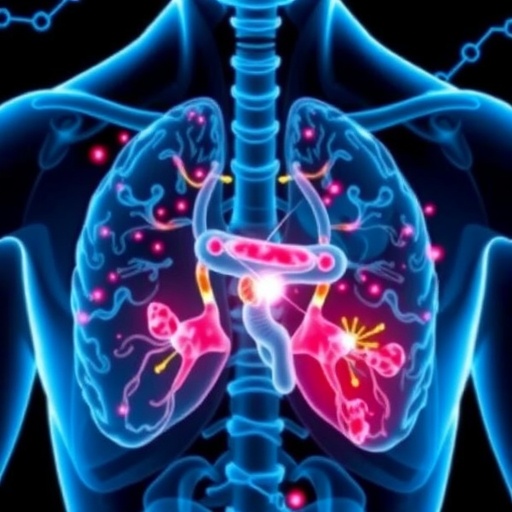Credit: Video edited and produced by Girupakaran Sivalingam, Bill Crowther and Mostafa Nabawy. Sound design by Conor Marsh. Music: The music was provided by NCS; track: Foria – Break Away [NCS Release] Link to…
Scientists have unlocked the secrets of how some predatory spiders catch their prey whilst hunting by successfully training one to jump different distances and heights for the first time.
The study, conducted by researchers at *The University of Manchester, is the most advanced of its kind to date and first to use 3D CT scanning and high-speed, high-resolution cameras to record, monitor and analyse a spider's movement and behaviour.
The aim of the research is to answer the question of why jumping spider anatomy and behaviour evolved the way it did, and secondly, to use this improved understanding of spiders to imagine a new class of agile micro-robots that are currently unthinkable using today's engineering technologies.
The study is being published in the journal Nature Scientific Reports.
Dr Mostafa Nabawy, lead author of the study, says: "The focus of the present work is on the extraordinary jumping capability of these spiders. A jumping spider can leap up to six times its body length from a standing start. The best a human can achieve is about 1.5 body lengths. The force on the legs at take-off can be up to 5 times the weight of the spider – this is amazing and if we can understand these biomechanics we can apply them to other areas of research."
The researchers trained the spider, which they nicknamed Kim, to jump different heights and distances on a manmade platform in a laboratory environment. Kim belongs to a species of jumping arachnid known as Phidippus regius, or 'Regal Jumping Spider'. The team then recorded the jumps using ultra-high-speed cameras, and used high resolution micro CT scans to create a 3D model of Kim's legs and body structure in unprecedented detail.
The results show that this particular species of spider uses different jumping strategies depending on the jumping challenge it is presented with.
For example, to jump shorter, close-range distances Kim favoured a faster, lower trajectory which uses up more energy, but minimises flight time. This makes the jump more accurate and more effective for capturing its prey. But, if Kim is jumping a longer distance or to an elevated platform, perhaps to traverse rough terrain, she jumps in the most efficient way to reduce the amount of energy used.
Insects and spiders jump in a number of different ways, either using a spring like mechanism, direct muscle forces or using internal fluid pressure.
Scientists have known for more than 50 years that spiders use internal hydraulic pressure to extend their legs, but what isn't known is if this hydraulic pressure is actively used to enhance or replace muscle force when the spiders jump.
Dr Bill Crowther, co-author of the study, explains: "Our results suggest that whilst Kim can move her legs hydraulically, she does not need the additional power from hydraulics to achieve her extraordinary jumping performance. Thus, the role of hydraulic movement in spiders remains an open question."
###
*The research team is comprised of specialists in microsystems, robotics, biomechanics and spider physiology from the University's School of Mechanical, Aerospace and Civil Engineering and School of Earth and Environmental Sciences. These were Dr Mostafa Nabawy, Dr Girupakaran Sivalingam, Dr Russell Garwood, Dr William Crowther and Prof William Sellers.
Notes to Editors
For media enquiries please contact Jordan Kenny on 0161 275 8257 or [email protected]
Reference: The paper, 'Energy and time optimal trajectories in exploratory jumps of the spider Phidippus regius' is being published in the journal Nature Scientific Reports by Mostafa R. A. Nabawy, Girupakaran Sivalingam1, Russell J. Garwood, William J. Crowther & William I. Sellers DOI:10.1038/s41598-018-25227-9
About The University of Manchester
The University of Manchester, a member of the prestigious Russell Group, is the UK's largest single-site university with more than 40,000 students – including more than 10,000 from overseas.It is consistently ranked among the world's elite for graduate employability.
The University is also one of the country's major research institutions, rated fifth in the UK in terms of 'research power' (REF 2014). World-class research is carried out across a diverse range of fields including cancer, advanced materials, addressing global inequalities, energy and industrial biotechnology.
No fewer than 25 Nobel laureates have either worked or studied here.
It is the only UK university to have social responsibility among its core strategic objectives, with staff and students alike dedicated to making a positive difference in communities around the world.
Manchester is ranked 38th in the world in the Academic Ranking of World Universities 2017 and 6th in the UK.
Visit http://www.manchester.ac.uk for further information.
Facts and figures: http://www.manchester.ac.uk/discover/facts-figures/
Research Beacons: http://www.manchester.ac.uk/research/beacons/
News and media contacts: http://www.manchester.ac.uk/discover/news/
Media Contact
Jordan Kenny
[email protected]
44-161-275-8257
@UoMNews
http://www.manchester.ac.uk
Related Journal Article
http://dx.doi.org/10.1038/s41598-018-25227-9





